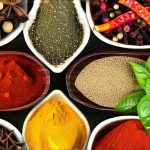Exploring new cultures is often deeply intertwined with experiencing their cuisine. Food isn’t simply sustenance; it’s a window into history, tradition, and community. However, for many individuals – those with sensitive digestive systems or pre-existing conditions, as well as travelers encountering unfamiliar ingredients – the excitement of culinary exploration can be dampened by the fear of gastrointestinal distress. This fear is understandable. Dramatic shifts in diet, novel spices, different cooking methods, and varying levels of food hygiene can all contribute to uncomfortable symptoms. But it doesn’t have to be an either/or proposition: you can safely enjoy cultural foods while minimizing digestive upset.
The key lies in mindful exploration – understanding potential triggers, employing proactive strategies, and listening closely to your body’s signals. This isn’t about avoiding exciting flavors or restricting yourself; rather, it’s about empowering yourself with knowledge and tools to navigate culinary adventures with confidence and comfort. It requires a balance between embracing the richness of diverse cuisines and respecting your individual digestive needs. This article aims to provide practical guidance on how to achieve that balance, allowing you to savor global gastronomy without sacrificing your well-being. If you are recovering from digestive issues, consider safely reintroduce solid foods gradually as part of this process.
Understanding Digestive Sensitivities & Cultural Foods
Digestive sensitivities vary widely among individuals. What bothers one person may not affect another at all. Some common culprits for digestive upset include: lactose (in dairy products), gluten (found in wheat, barley, and rye), fructose (present in many fruits and sweeteners), FODMAPs (fermentable oligosaccharides, disaccharides, monosaccharides, and polyols – a group of carbohydrates), spices (particularly those unfamiliar to your palate), and high-fat foods. Cultural cuisines often utilize ingredients that fall into these categories. For example, Indian cuisine frequently incorporates dairy and spices; Southeast Asian dishes may rely heavily on fermentation processes introducing FODMAPs; Mexican food utilizes generous amounts of fat and sometimes gluten in tortillas.
It’s important to identify your personal sensitivities before venturing into new culinary territories. Keeping a food diary can be immensely helpful – tracking what you eat, how you feel afterward, and any associated symptoms. This will help pinpoint potential triggers. Consider if you already know you have a sensitivity to certain foods; don’t assume cultural dishes are immune simply because they’re different or exotic. Furthermore, differences in food preparation methods can significantly impact digestibility. Fermented foods, while beneficial for gut health for some, can cause bloating and gas in others. Similarly, frying increases fat content, potentially exacerbating digestive issues in those sensitive to fats. If you’re planning a trip, be sure to review how to travel without triggering symptoms.
Finally, remember that portion size plays a crucial role. Even well-tolerated foods can cause discomfort when consumed in excessive amounts. When trying new cuisines, start with smaller portions to assess your body’s reaction before indulging fully. Be mindful of the cumulative effect of multiple unfamiliar ingredients introduced at once – a single spice might be manageable, but combined with other novel flavors and textures, it could overwhelm your digestive system. If you struggle with gas, consider how to reduce gas without cutting healthy foods from your diet.
Proactive Strategies for Comfortable Exploration
Preparation is key. Before embarking on a culinary adventure, research the cuisine you’ll be exploring. Identify common ingredients and potential triggers based on your known sensitivities. Online resources, cookbooks dedicated to specific cuisines, or even asking friends who are familiar with the food can provide valuable insights. Look for recipes that list ingredients clearly – this allows you to assess potential problem areas beforehand.
When dining out, don’t hesitate to communicate with restaurant staff. Politely inquire about ingredients and preparation methods. Many restaurants are accommodating to dietary requests and can modify dishes to suit your needs. For example, you might ask for a dish to be prepared without dairy or gluten, or request less spice. Don’t assume that “mild” automatically means no spice – cultural standards for spiciness vary greatly. Consider ordering simpler dishes initially, gradually introducing more complex flavors as your body adjusts.
Another proactive step is to bolster your digestive system before and during travel (if applicable). This could involve incorporating probiotic-rich foods into your diet a few weeks prior to your trip or taking a daily probiotic supplement (consult with a healthcare professional before starting any new supplements). Packing digestive aids, such as over-the-counter remedies for bloating, gas, or diarrhea, can also provide peace of mind. Hydration is paramount – drink plenty of water throughout the day, especially when traveling to different climates or consuming spicy foods. It’s important to keep hydrated even if you have a sensitive stomach.
Navigating Spice Levels & Heat
Spice is often central to many cultural cuisines, and what’s considered “mild” varies dramatically across cultures. Capsaicin, the compound responsible for the heat in chili peppers, can be a significant trigger for digestive upset in some individuals. It doesn’t necessarily cause damage, but can stimulate increased gastric acid production and accelerate intestinal motility, leading to heartburn, bloating, or diarrhea.
- Start small: Order dishes labeled “mild” and assess your tolerance before venturing into spicier options.
- Request adjustments: Ask the restaurant to reduce the amount of chili peppers or spice used in your dish.
- Pair with cooling foods: Consume spicy food alongside dairy products (like yogurt or lassi) or starchy carbohydrates (like rice), which can help neutralize the heat and soothe your digestive system.
- Hydrate, hydrate, hydrate: Drinking water doesn’t always alleviate the burn; milk is often more effective due to its fat content which helps dissolve capsaicin.
It’s also important to remember that spice isn’t just about chili peppers. Many cultural cuisines utilize other pungent spices like ginger, garlic, and cumin, which can also cause digestive discomfort in sensitive individuals. Be mindful of these ingredients as well and adjust your intake accordingly. Gradual exposure is key – slowly increasing your tolerance over time may help your body adapt to spicier flavors.
Dealing with Fermented Foods
Fermentation is a cornerstone of many traditional cuisines, playing a role in preservation, flavor development, and nutritional enhancement. From kimchi in Korea to sauerkraut in Germany, fermented foods offer potential health benefits due to their probiotic content. However, the fermentation process also produces compounds that can trigger digestive issues for some people – namely FODMAPs (fermentable carbohydrates).
- Start with small portions: Introduce fermented foods gradually into your diet, beginning with very small amounts to gauge your tolerance.
- Choose wisely: Some fermented foods are lower in FODMAPs than others. For example, traditionally made sauerkraut may be better tolerated than kimchi due to the different fermentation processes involved.
- Consider preparation methods: The length of fermentation and ingredients used can affect FODMAP content.
- Listen to your body: If you experience bloating, gas, or diarrhea after consuming fermented foods, reduce your intake or eliminate them from your diet altogether.
It’s important to distinguish between naturally fermented foods and those that have been pasteurized – pasteurization kills the beneficial bacteria, negating some of the health benefits. Furthermore, individuals with histamine intolerance may also experience reactions to fermented foods due to their high histamine content.
Traveling & Food Safety Considerations
Traveling introduces additional challenges when it comes to food safety and digestive health. Different regions have varying standards for hygiene and sanitation, increasing the risk of foodborne illness. Food poisoning can mimic the symptoms of a sensitive stomach, making it difficult to distinguish between a genuine sensitivity and a temporary reaction to contaminated food.
- Choose reputable restaurants: Opt for establishments that appear clean and well-maintained.
- Be mindful of street food: While tempting, street food carries a higher risk of contamination. If you do choose to eat street food, select vendors with high turnover and visible hygiene practices.
- Drink bottled or purified water: Avoid tap water, ice cubes, and beverages made with tap water.
- Peel fruits and vegetables yourself: This reduces the risk of exposure to contaminants.
- Pack essential medications: Carry over-the-counter remedies for diarrhea, nausea, and vomiting, as well as any prescription medications you may need.
If you do experience symptoms of food poisoning – such as severe vomiting or diarrhea – seek medical attention promptly. Hydration is crucial during these episodes. Remember that preventing foodborne illness is the best way to protect your digestive health while traveling. Before a trip, it’s also wise to prepare for a test if you have concerns.
Ultimately, enjoying cultural foods safely requires a combination of awareness, preparation, and mindful consumption. By understanding your own sensitivities, employing proactive strategies, and listening closely to your body’s signals, you can unlock the rich tapestry of global gastronomy without compromising your well-being. Don’t let fear dictate your culinary choices – embrace the adventure with confidence and savor the flavors that await! If nausea is a concern, learning how to use flavored water can be helpful. And if you suspect certain foods are triggers, consider reintroducing trigger foods. Lastly, don’t forget to reduce gas if that’s a concern for you.


















